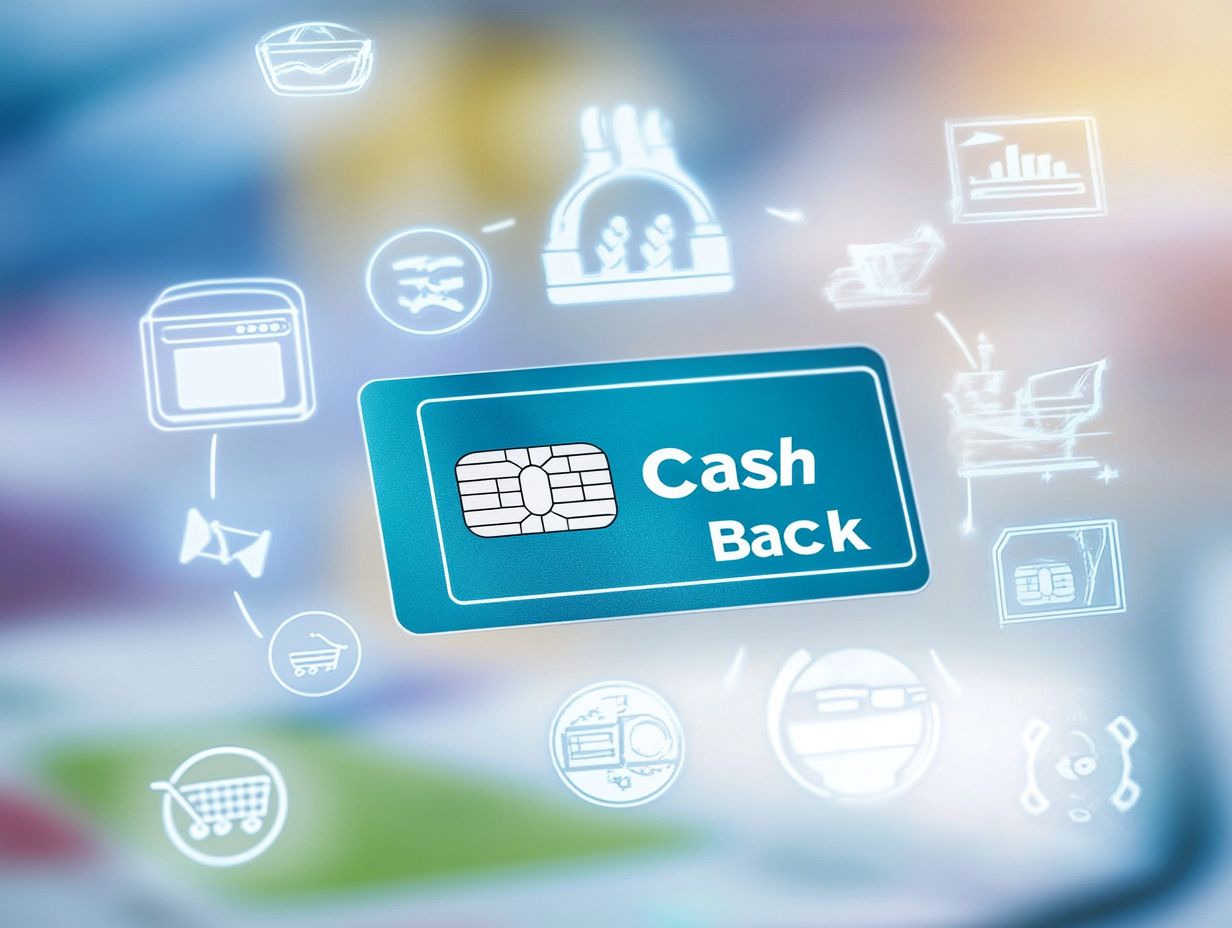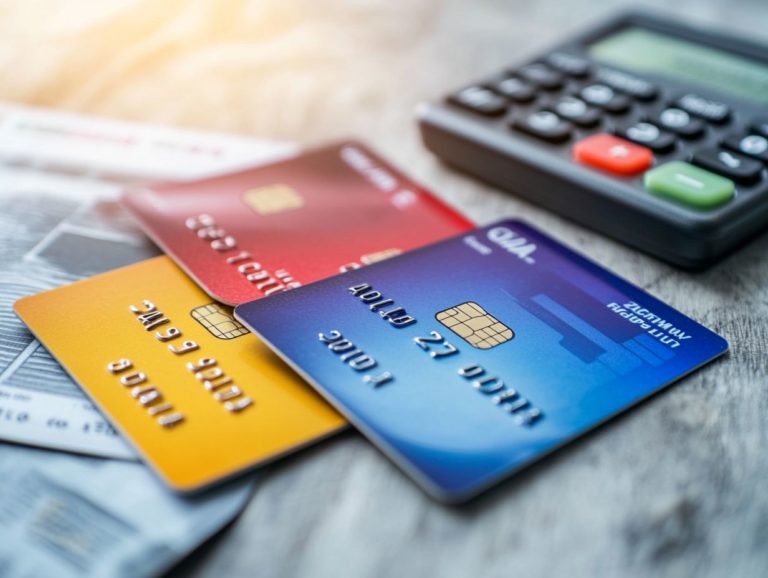Key Factors to Consider for Cash Back Cards
Cash back cards have emerged as an enticing option for those eager to optimize their everyday spending.
With a plethora of options and features at your fingertips, selecting the perfect card can feel overwhelming. This article distills the essentials of cash back cards, exploring various structures like flat rate versus tiered rewards and highlighting crucial factors such as annual fees and interest rates.
You ll also find tips on how to maximize your cash back rewards, ensuring you extract the utmost value from every purchase.
Dive into this guide and supercharge your spending strategy today!
Contents
- Key Takeaways:
- Understanding Cash Back Cards
- Types of Cash Back Cards
- Factors to Consider When Choosing a Cash-Back Card
- Maximizing Cash Back Rewards
- Frequently Asked Questions
- What are the key factors to consider when choosing a cash back card?
- What types of cash back rewards are typically offered by cash back cards?
- How important is the annual fee when considering a cash back card?
- What interest rate should I look for in a cash back card?
- What are some common redemption options for cash back rewards?
- What additional perks or benefits should I look for in a cash back card?
Key Takeaways:
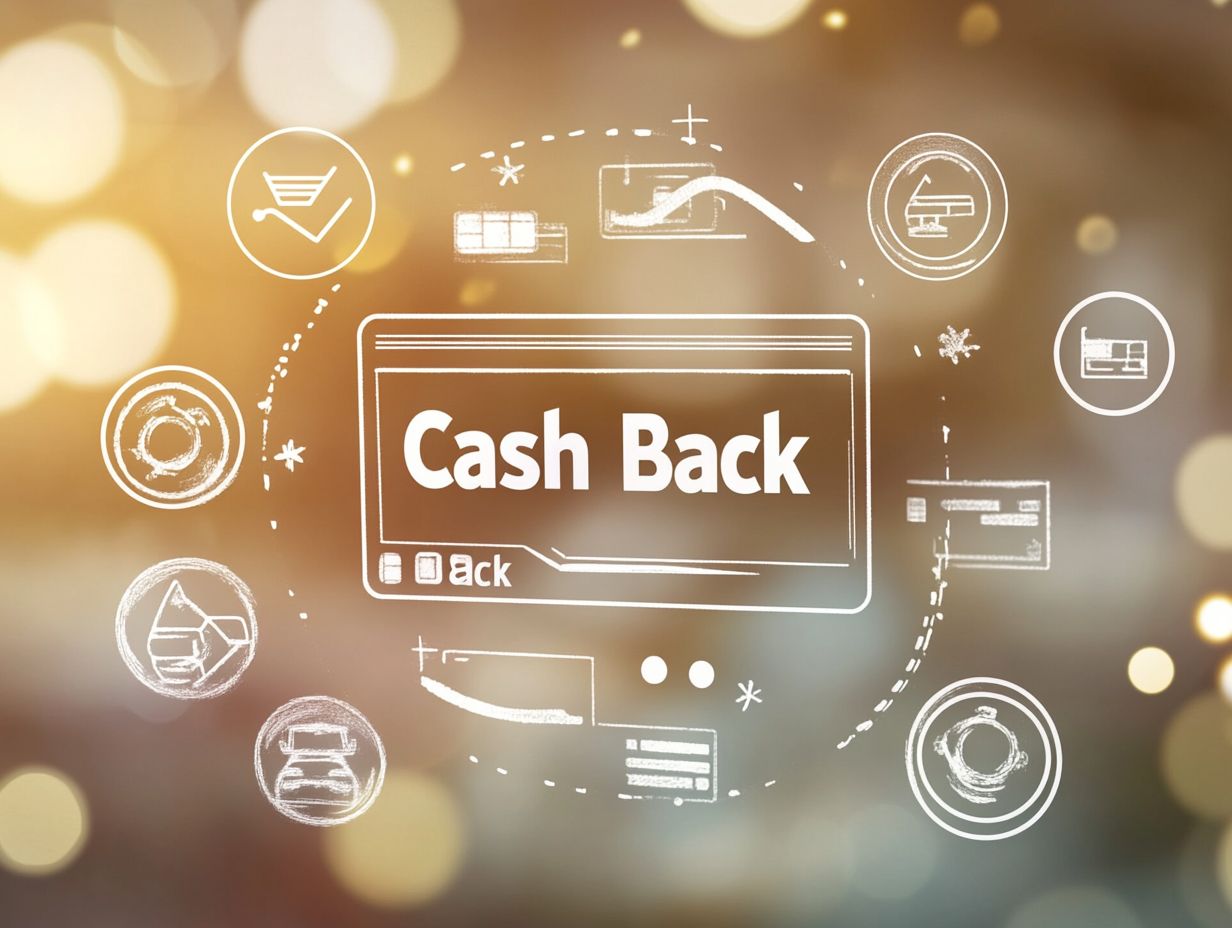
Understanding Cash Back Cards
Understanding cash back cards entails diving into their mechanics, examining the diverse credit card offers out there, and recognizing the future of cash back credit cards tailored to your spending habits.
These cards have gained significant traction, thanks to their ability to provide you with cash back on eligible purchases. They cover various categories, including groceries, gas, and beyond.
Noteworthy options like the Chase Freedom and Discover it present unique rewards structures that can truly elevate your financial choices.
What are Cash Back Cards?
Cash back cards are a smart choice for those who appreciate rewards. They allow you to earn a percentage of your spending back as cash, typically reflected on your monthly statement. To maximize benefits, it’s helpful to understand cash back card categories, making them particularly appealing for the frequent spender.
These financial products operate on a simple yet rewarding principle: for every purchase you make, a certain percentage often between 1% and 5% is returned to you. There s a variety of cash back cards on the market, including options that offer flat-rate rewards and those that provide elevated percentages in specific categories.
Flat-rate rewards give you the same percentage back on all purchases, while tiered rewards offer different percentages based on categories like groceries, gas, or dining.
By grasping the fundamentals of cash back rewards, you can not only maximize your earnings but also recognize what to look for in a rewards credit card as a more advantageous choice among the broader array of credit cards. They encourage you to spend with intention, transforming your everyday purchases into financial benefits.
Types of Cash Back Cards
The landscape of cash back cards is diverse, offering a range of choices that cater to your unique spending habits. You ll find two main structures: flat rate and tiered cash back, along with options that feature rotating or fixed categories.
For example, flat rate cards, such as the Capital One Quicksilver, provide a steady percentage back on all your purchases. On the other hand, cards like the Chase Freedom and Discover it leverage spending categories that shift periodically to enhance your rewards potential. This way, you can choose the card that best aligns with your financial lifestyle.
Flat Rate vs. Tiered Cash Back
Flat rate cash back cards offer you a consistent percentage of cash back on all your purchases, while tiered cash back cards present varying rewards based on specific spending categories. Each option caters to different financial goals and spending habits.
If you prefer simplicity in managing your finances, flat rate cash back cards may be particularly appealing. They provide straightforward rewards, sparing you the hassle of tracking multiple categories.
Conversely, if you re strategic about your spending, tiered cash back cards can deliver higher rewards for categories like groceries or gas, which many credit card offers emphasize.
However, be mindful that tiered systems sometimes come with restrictions, such as annual spending limits in certain categories, which could cap your overall cash back potential. By grasping these differences, you can select the cash back structure that aligns perfectly with your unique spending patterns.
Rotating Categories vs. Fixed Categories
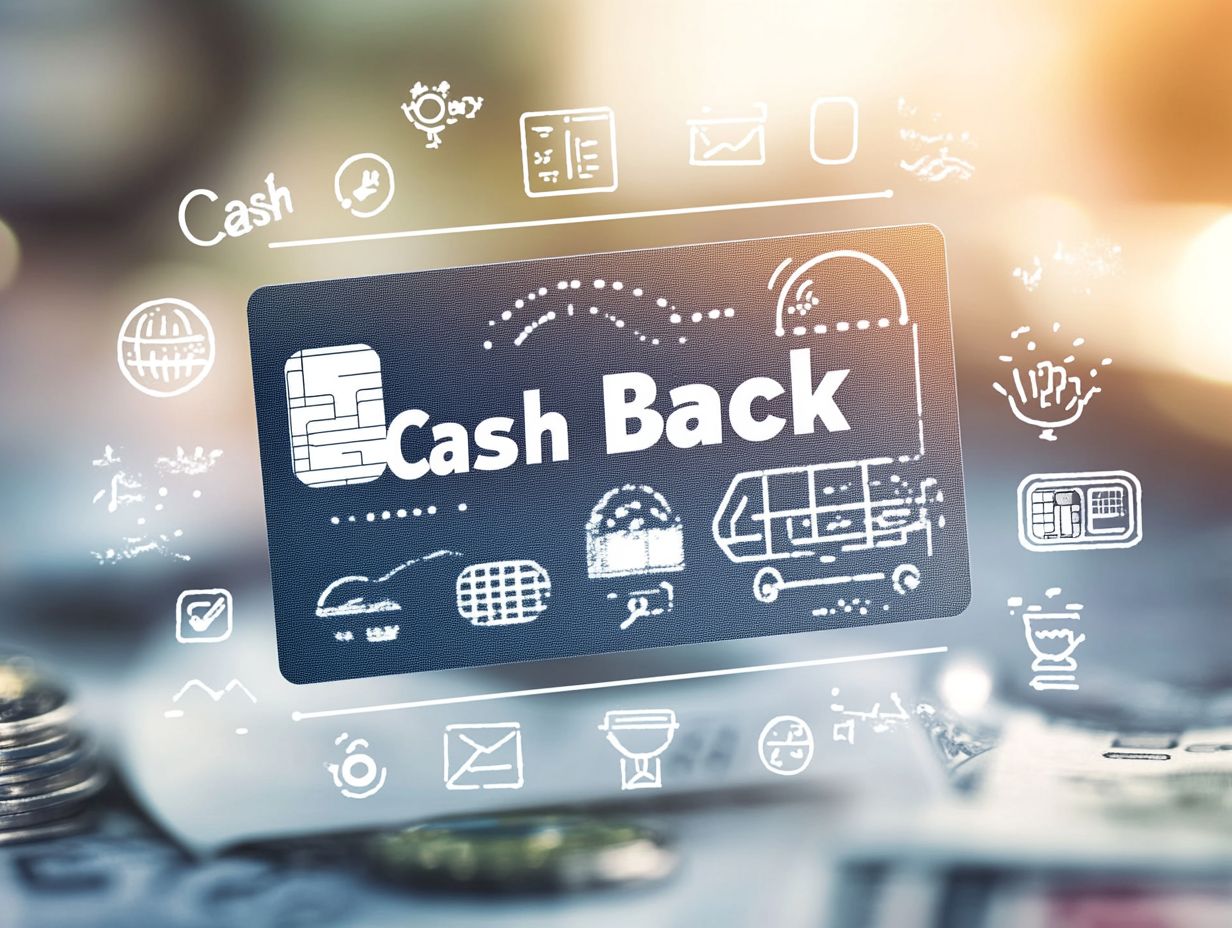
Rotating categories in cash-back cards, like those from Chase Freedom and Discover it, change every quarter. This prompts you to adjust your spending habits to earn more rewards.
Such changes encourage a strategic approach to spending. If grocery shopping offers a higher cash-back rate in the upcoming quarter, you might decide to buy more groceries then.
On the other hand, fixed category cards like the Citi Double Cash ensure you earn guaranteed rewards on daily expenses, such as gas, dining, or online shopping, no matter the season.
Your choice between these two types of cards can greatly affect how rewards accumulate, so think carefully about your spending habits.
Factors to Consider When Choosing a Cash-Back Card
When selecting a cash-back card, several essential factors are important. Consider the impact of annual fees, interest rates, sign-up bonuses, redemption options, and tips for understanding cash back card offers that are tailored to your financial needs.
By understanding these elements, you can choose a cash-back credit card that best aligns with your spending patterns and financial goals. Learning about the role of cash back cards in financial planning will help you make the most of your rewards while ensuring the card fits into your lifestyle.
Annual Fees
Annual fees linked to cash-back credit cards can significantly influence the overall value of the card. Think about your spending habits and the potential cash-back earnings in relation to the fee.
Some cash-back credit cards come with no annual fee, allowing you to enjoy rewards without any upfront cost. This is perfect for those who appreciate straightforward options.
Conversely, premium cards may charge a fee but offer enhanced perks, such as higher cash-back rates or travel rewards, which can easily offset the costs.
Quickly assess if the card’s rewards outweigh its fees by analyzing your spending patterns. Check if the rewards you’ll earn will surpass the annual fee.
Interest Rates
Interest rates play a crucial role when choosing a cash-back credit card. High rates can overshadow the benefits of earning cash-back, especially if you tend to carry a balance. To maximize your rewards, consider these tips for switching to a cash back credit card.
Understanding how interest rates affect your finances is essential. They can significantly reduce the rewards you’ve earned if you do not pay off your balance in full each month.
By consistently paying off your balances, you can tap into the full potential of cash-back rewards without facing interest charges. This not only maximizes your savings but also enhances your experience of using credit wisely.
These strategic decisions can elevate the effectiveness of cash-back credit cards, transforming routine transactions into savvy financial maneuvers.
Sign-up Bonuses
Sign-up bonuses are among the most enticing features of cash back cards. They deliver substantial rewards once you meet the minimum spending requirement after opening your account. This provides a compelling incentive to start using your card.
These bonuses can range from a few hundred dollars to a significant percentage back on your purchases, depending on the card you choose. For example, popular options like the Chase Freedom Flex typically offer a bonus after you spend a certain amount in the first few months, making it hard to resist those necessary purchases.
Knowing how bonuses work helps you spend wisely for maximum rewards. Understanding the minimum spending requirement is critical; missing it can leave you frustrated after losing out on a lucrative promotional offer.
You can easily combine regular expenses, like groceries and utility bills, to meet the spending requirement, allowing you to take full advantage of these enticing bonuses. Many cards also, such as the Discover it Cash Back, offer bonuses and feature changing categories that provide higher cash back percentages throughout the year.
This dynamic approach to rewards keeps you engaged and helps you maximize your credit card experience.
Redemption Options
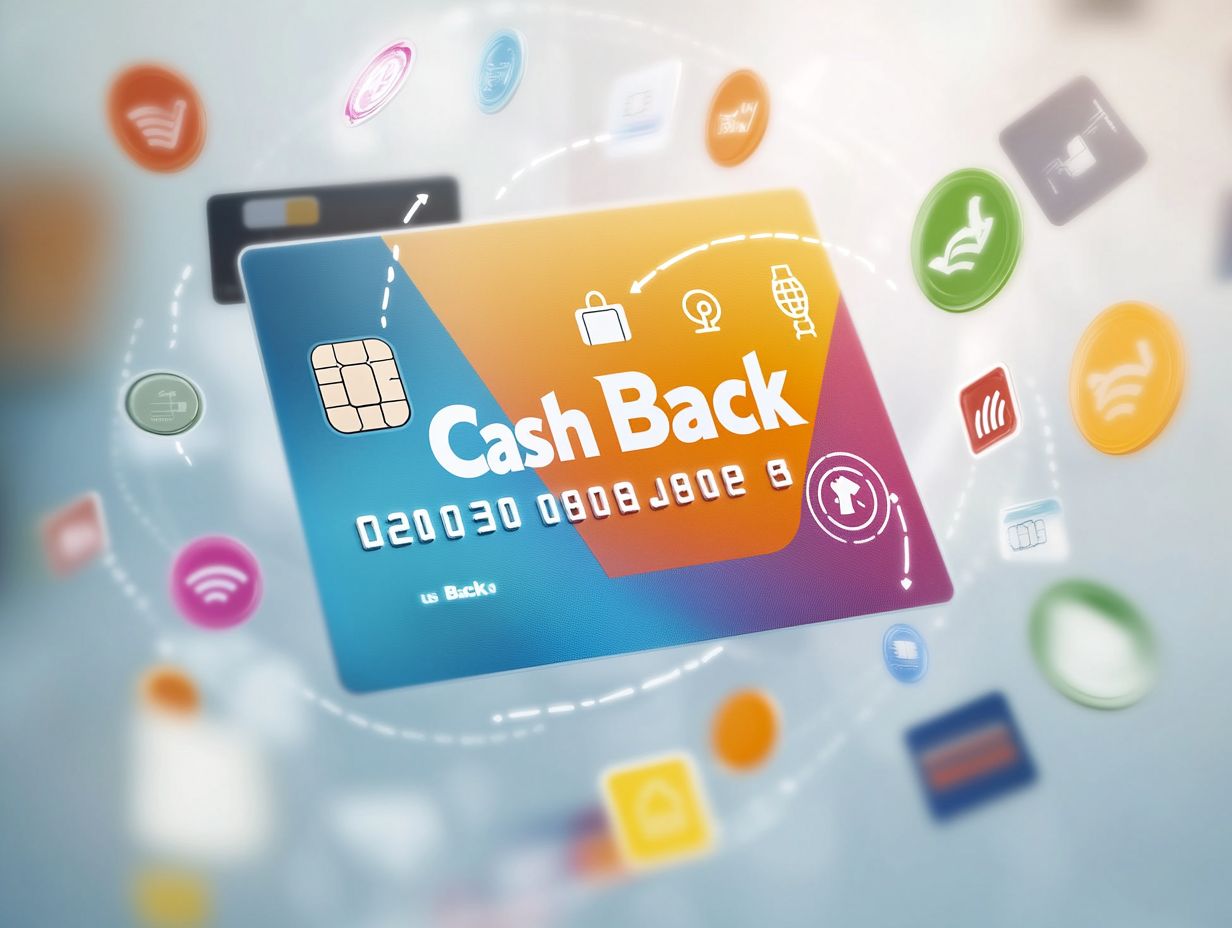
Redemption options for cash back rewards can differ significantly by card, allowing you to choose how to utilize your rewards. You can use them for statement credits, direct deposits into your bank account, or gift cards. This gives you flexibility to decide what best suits your needs.
Certain cards even allow you to redeem rewards for travel expenses, merchandise, or charitable donations, catering to a variety of consumer preferences. Understanding these options is essential; it enables you to maximize the value of your earned cash back.
Whether you want to offset monthly bills or treat yourself to something special, being aware of the redemption process equips you to make informed choices.
Some cards come with tiered bonus categories, so it’s vital to stay updated on which purchases yield the highest returns. This knowledge enhances your overall cash back experience and ensures you re getting the most bang for your buck.
Additional Perks and Benefits
Additional perks and benefits, such as purchase protection, travel insurance, and extended warranty coverage, significantly enhance the value of cash back credit cards. These exciting features can change the way you choose your card!
For example, purchase protection acts as a safety net for your recent purchases, guarding against theft or damage and allowing you to shop with confidence. Travel insurance can ease your mind during trips, covering unexpected cancellations or medical emergencies that could otherwise disrupt your plans.
Extended warranty coverage adds further value to select purchases, offering you extra security if items fail shortly after the original warranty expires. By weighing these various advantages, you’ll find that cash back credit card options not only deliver immediate rewards but also foster a richer and more secure financial experience, making them an astute choice for both everyday expenses and special occasions.
Maximizing Cash Back Rewards
To maximize your cash back rewards, implement a range of tailored tips and strategies that align with your unique spending habits. By doing so, you can ensure that you earn the highest possible return on your eligible purchases across various spending categories.
Tips and Strategies
To get the most cash back, it s essential to understand your spending habits. Leverage the rewards structure of your chosen card and regularly review your monthly statement for the best cash back opportunities.
Examine where and how often you spend money whether on groceries, dining, or travel. Choosing a card that offers enhanced rewards in those specific areas can be beneficial. For instance, if dining out is a significant portion of your monthly expenses, selecting a card that gives you 3% cash back in that category can really add up over time.
Don t overlook the potential of signing up for promotions or bonus categories that change quarterly. These can significantly boost your cash back earnings. Regularly assessing your spending patterns allows you to refine your strategies, ensuring you re maximizing the benefits tailored to your unique lifestyle!
Frequently Asked Questions
-
What are the key factors to consider when choosing a cash back card?
The key factors include the type of cash back rewards offered, annual fees, interest rates, redemption options, and tips for managing cash back credit card rewards, along with any additional perks or benefits.
-
What types of cash back rewards are typically offered by cash back cards?
Cash back cards usually offer either a flat rate on all purchases or tiered categories that provide higher rewards for specific spending types, such as groceries, gas, or dining, allowing you to maximize your savings with cash back credit cards.
-
How important is the annual fee when considering a cash back card?
The annual fee is crucial as it can greatly affect the overall value of the cash back rewards. Weigh the annual fee against potential cash back rewards to determine if the card is worth it.
-
What interest rate should I look for in a cash back card?
Look for a cash back card with a low interest rate to save money if you carry a balance. However, if you plan on paying your balance in full each month, the interest rate may not be as important.
-
What are some common redemption options for cash back rewards?
Common options include statement credits, direct deposits, gift cards, and merchandise. Some cards may also allow you to use cash back rewards for travel expenses.
-
What additional perks or benefits should I look for in a cash back card?
Some cards may offer additional perks like travel insurance, extended warranties, or purchase protection. Consider your spending habits to determine which perks would be most valuable to you.

